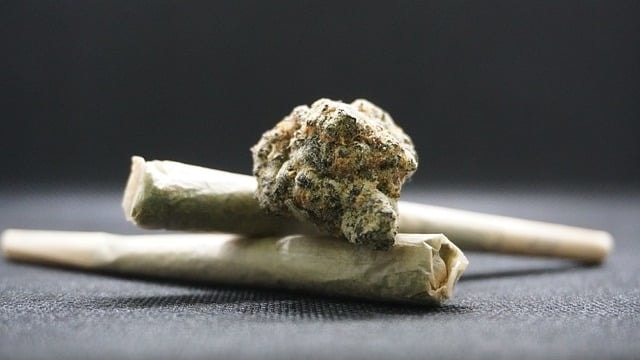How To Know If Weed Is Laced (And How To Avoid It)
Cannabis consumption is becoming increasingly common as more states and countries move towards legalization. However, one of the major concerns for consumers is the potential for laced weed. Laced weed refers to marijuana that has been mixed with other substances, such as fentanyl, crystal meth, or acid, which are drugs commonly mixed with weed and can have dangerous effects.
The increasing popularity of cannabis makes it crucial for users to be aware of the risks associated with consuming laced cannabis, including opioid overdose if fentanyl is present in the marijuana. In this article, we will explore how to identify if your weed is laced, the risks associated with consuming laced weed, and what you can do to protect yourself, such as using a fentanyl test strip if you suspect contamination.
What is Laced Weed?
Laced weed is cannabis that has been intentionally contaminated with other drugs or chemicals. This can be done to enhance the effects of the marijuana, to create a different type of high, or to increase the profit for the dealer by adding cheaper substances. Common substances used to lace weed include:
-
Fentanyl: A powerful synthetic opioid that can be deadly in small amounts. Even a minuscule amount of fentanyl can cause severe respiratory depression and be life-threatening.
-
Acid (LSD): A potent hallucinogen that can cause intense and unpredictable effects. LSD can lead to extreme psychological experiences that are far beyond the typical effects of cannabis.
-
PCP (Phencyclidine): A dissociative drug known for its severe psychological effects. PCP laced marijuana (wet weed) can cause hallucinations, euphoria, and feelings of detachment from reality, which can be very disorienting and dangerous.
-
Cocaine: A stimulant that can increase heart rate and blood pressure. Cocaine-laced weed can lead to heightened alertness, paranoia, and an increased risk of heart-related issues.
by Lucas Sankey (https://unsplash.com/@lucassankey)
by Matthew Brodeur (https://unsplash.com/@mrbrodeur)
Why is Laced Weed Dangerous?
The primary danger of laced marijuana is the unpredictability of its effects. When cannabis is mixed with other substances, such as fentanyl or other drugs, the user can experience varied psychoactive effects that are unexpected and potentially harmful. For example, fentanyl-laced marijuana can cause respiratory depression, leading to fentanyl overdose and death. Laced marijuana with LSD can result in intense hallucinations and psychological distress. The unpredictable nature of these effects makes laced marijuana particularly hazardous, as users may not know how to prepare for or handle the experience.
Moreover, the risks are compounded by the fact that users may not know what other substances they are ingesting, making it difficult to seek appropriate medical help in case of an adverse reaction. Misidentification of symptoms can delay critical medical intervention, increasing the risk of severe consequences. Additionally, consuming laced weed can have long-term health impacts, including addiction to fentanyl or other drugs, mental health issues, and cardiovascular problems.
How to Know If Weed Is Laced?

Visual Inspection
One of the first steps in identifying laced weed is a thorough visual inspection. Here are some signs to look out for:
-
Color: Pure cannabis should be green with varying shades depending on the strain. If you notice unusual colors like white, blue, or black spots, it could be a sign of contamination with fentanyl or other drugs. Discoloration may also indicate the presence of mold, mildew, or other foreign substances.
-
Texture: High-quality marijuana should have a slightly sticky texture due to the presence of trichomes. If the weed feels excessively powdery or gritty, it might be laced with other substances. Trichomes are tiny, crystal-like structures that contain the plant’s cannabinoids and terpenes.
-
Appearance: Check for any foreign particles or substances mixed with the cannabis. This could include powders, crystals, or any other materials that don’t belong. Examining the buds closely can help you spot any irregularities that might indicate contamination with illicit or illegal drugs.
by Drew Taylor (https://unsplash.com/@replicantman)
by Israel Sundseth (https://unsplash.com/@kappuru)
Smell Test
Cannabis has a distinctive smell that varies slightly between strains but is generally earthy and skunky. If your weed has an unusual chemical or medicinal odor, it could be a sign that it has been laced with another substance. A strong chemical smell might indicate the presence of synthetic drugs or other contaminants. Familiarizing yourself with the natural aroma of cannabis can help you detect any off-putting scents more easily.
Taste Test
While it’s not recommended to consume weed if you suspect it might be laced, you can take a small taste to check for unusual flavors. Pure cannabis should have a somewhat herbal and earthy taste. If it tastes bitter, metallic, or chemical-like, it could be contaminated. Be cautious with this method, as even a small amount of a harmful substance can have adverse effects.
by Matteo Paganelli (https://unsplash.com/@matteopaga)

Effects
The effects of laced weed can be drastically different from those of pure cannabis. Here are some red flags to watch out for:
-
Unusual High: If you experience an unusually intense or different high, it could be a sign that your weed is laced. The high from laced weed can be much more potent and unpredictable, leading to discomfort or distress.
-
Physical Symptoms: Symptoms like numbness, tingling, rapid heartbeat, or extreme drowsiness are not typical of cannabis use and may indicate the presence of other drugs. Pay attention to any unusual physical reactions that differ from your usual experience with cannabis.
-
Psychological Effects: Intense hallucinations, paranoia, or extreme anxiety are not common effects of cannabis and could suggest contamination. If you feel disconnected from reality or experience severe mental disturbances, it’s crucial to seek help immediately.
What to Do If You Suspect Your Weed is Laced
Stop Using It
If you suspect that your weed is laced, the first step is to stop using it immediately. Continuing to consume potentially contaminated cannabis can increase your risk of harmful effects. Discontinuing use is essential to prevent further exposure to the dangerous substances that might be present in the weed.
Seek Medical Help
If you or someone else experiences severe symptoms after consuming weed, seek medical help immediately. Be honest with healthcare providers about what you consumed; this information is crucial for appropriate treatment. Prompt medical intervention can mitigate the adverse effects and prevent complications.
Report It
If you purchased the weed from a dispensary or a dealer, report your suspicions to them. This can help prevent others from consuming potentially dangerous substances. In some regions, you may also report to local authorities or public health organizations. Reporting suspicious products can assist in broader public health efforts to monitor and control contaminated cannabis.
by Plants for Persephone (https://unsplash.com/@plantsfor_persephone)
by Robina Weermeijer (https://unsplash.com/@averey)
How to Protect Yourself
Buy from Reputable Sources
One of the best ways to protect yourself is to buy cannabis from reputable and legal sources. Licensed dispensaries are required to follow strict regulations and testing protocols to ensure the safety and quality of their products. Purchasing from a trusted source significantly reduces the risk of encountering laced weed.
Educate Yourself
Knowledge is power. Educate yourself about the different strains of cannabis, their effects, and how to identify high-quality weed. This can help you make informed decisions and spot potential red flags. Familiarize yourself with the various aspects of cannabis, including its appearance, smell, and taste, to better identify any anomalies.
Use Test Kits
There are test kits available that can help detect the presence of certain substances in your weed. While not foolproof, these kits can provide an additional layer of safety. Test kits can identify common contaminants and give you peace of mind about the cannabis you’re consuming.
by Wesley Gibbs (https://unsplash.com/@wesleygibbs)
by Budding . (https://unsplash.com/@budding)
Stay Informed
Staying informed about the latest developments regarding laced marijuana is crucial for your safety and well-being. Fentanyl-laced weed and marijuana contaminated with other substances continue to pose a significant threat in many areas. By actively seeking out relevant information, you can empower yourself to make informed decisions and avoid potentially harmful products.
Local health departments are a valuable resource for up-to-date information on contaminated cannabis in your community. They often issue alerts and warnings about specific batches or strains that have tested positive for fentanyl or other harmful substances. Cannabis advocacy groups can also provide valuable insights and updates on the latest trends and risks associated with laced marijuana.
Regularly checking for news and alerts related to contaminated cannabis can help you stay ahead of the curve and avoid purchasing or consuming potentially dangerous products. Some helpful resources include:
-
Local news outlets: Stay tuned to local news channels and websites for any reports of contaminated cannabis in your area.
-
Social media: Follow relevant health departments and cannabis advocacy groups on social media platforms like Twitter or Facebook to receive real-time updates.
-
Cannabis community forums: Online forums and communities dedicated to cannabis can be a good source of information and discussions about laced weed and safety concerns.
By staying informed and aware of the current issues and recalls related to contaminated cannabis, you can make more informed choices and reduce your risk of exposure to potentially harmful substances. Remember, knowledge is power when it comes to protecting your health and safety in the context of cannabis consumption.
Conclusion
The risk of consuming laced marijuana is a serious concern for cannabis users. By staying informed, buying from reputable sources, and knowing the signs of contamination, you can protect yourself from the potentially dangerous effects of smoking marijuana laced with unknown substances. Always prioritize your safety and well-being, and don’t hesitate to seek medical help if you suspect you have consumed laced cannabis.
By following these guidelines, you can enjoy cannabis responsibly and avoid the risks associated with laced weed. Taking proactive steps to ensure the quality and safety of your cannabis will help you have a positive and safe experience, and decrease the risk of developing a substance use disorder.
Seeking Treatment? We Can Help!
We work with PPO Out of Network Health Insurance Policies
If you or a loved one are struggling with mental health challenges or substance abuse, reach out to Mountain Sky Recovery today. Our team of compassionate professionals is here to support your journey towards lasting well-being. Give us a call at 951-877-5868.
FAQs For How To Tell If Weed Is Laced
1. What are the most common signs of laced weed?
Lacing methods vary, but common signs include unusual odors (chemical, perfume-like), sparkly or crystalline residues, overly sticky buds, and unexpected side effects like extreme paranoia, hallucinations, or severe nausea.
2. Can laced weed look normal?
Yes, lacing can be subtle. Visual inspection alone may not be enough. Even weed that appears normal could be laced with substances that aren’t visible. Trusting your source is crucial, but if unsure, consider testing.
3. Are there any at-home tests for laced weed?
While some DIY kits claim to detect certain additives, they’re often unreliable and can’t identify all substances. Professional lab testing is the most accurate method to determine the presence of contaminants.
4. What should I do if I suspect I have laced weed?
Don’t consume it. If you’ve already used it and experience severe symptoms, seek medical attention immediately. Report the incident to local authorities to help prevent others from being affected.













